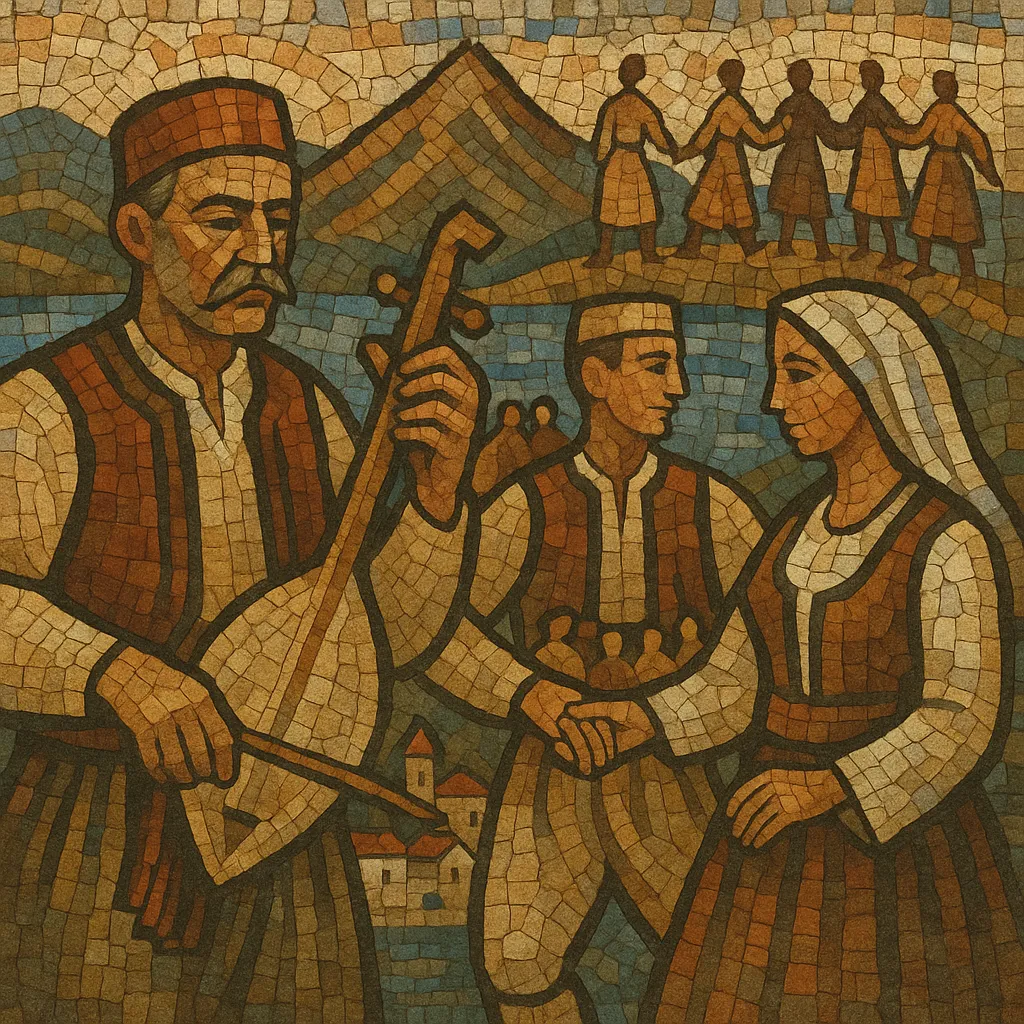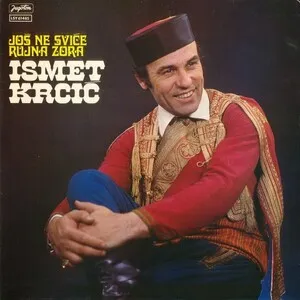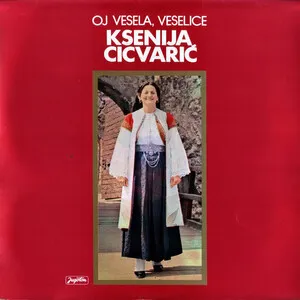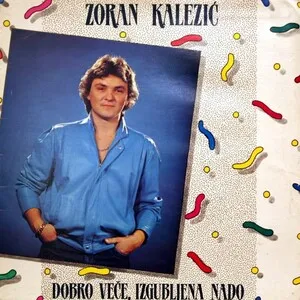
Montenegrin folk music is the traditional music of the mountainous and coastal regions of modern-day Montenegro, shaped by centuries of oral epic singing, clan-based dance culture, and coastal polyphonic song.
At its core stands the gusle—a single-stringed bowed instrument—accompanying decasyllabic epic verse about heroes, honor, and historic battles. In the highlands and inner regions, solo or unison singing with a sustained drone and narrow-range melodies predominates, while on the Adriatic coast (Boka Kotorska) multipart klapa-style vocal harmony reflects Mediterranean and Venetian ties.
Dances such as the oro (a circle dance symbolically forming an “eagle”) and various kolo variants are central to social life, often performed to asymmetric Balkan meters. The sound world blends Slavic narrative traditions with Ottoman modal color and coastal homophony, producing a repertoire that can be both austere and heroic or warmly communal and lyrical.
Montenegrin folk music grew from an oral tradition rooted in clan (pleme) life and epic storytelling. Epic songs accompanied by the gusle crystallized around decasyllabic verse, commemorating heroes, blood feuds, and battles. This practice, with medieval antecedents, became a cultural emblem of the highland society and a vehicle for preserving memory.
From the late medieval period through the Ottoman era—and under strong Venetian influence along the coast—local styles absorbed modal and rhythmic elements from Ottoman musical culture and maritime polyphony from the Adriatic. This produced a dual character: monophonic, drone-rich epic singing in the interior and multipart, Mediterranean-inflected harmony in coastal towns.
During the 1800s, the gusle tradition and heroic songs gained new prominence amid state-building and the poetry of Petar II Petrović-Njegoš. Singing became a marker of identity and collective memory, with oro dance customs reinforcing community cohesion in village and festive settings.
In the Yugoslav period, cultural-artistic societies (KUDs) codified repertoires for stage presentation, while radio and records disseminated songs nationwide. Urban ensembles cultivated coastal multipart singing, and festivals promoted regional varieties (highland epic, coastal klapa, and wedding/lament traditions). Researchers documented epic bards such as Avdo Međedović, whose performances revealed the scale and artistry of oral composition.
After independence in 2006, Montenegro strengthened support for heritage, with local KUDs, klapa groups, and guslar associations sustaining practice. Coastal festivals and folk-dance ensembles showcase regional variants, while younger performers balance preservation with subtle modernization (arrangement, ensemble accompaniment), keeping the tradition vibrant at home and in the diaspora.







